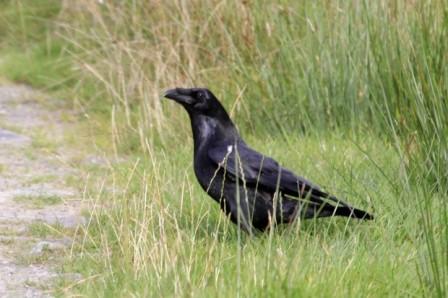Pressures of gang life
A gentleman came into the Falls of Clyde Visitor Centre a while ago to ask us about a group (also known as a congress, conspiracy or unkindness) of ravens that he had seen whilst walking up Tinto. There were over 50 of them playing together, foraging and flying overhead. These ravens would be juveniles, as once they become adults they will pair off and defend a territory. This roaming ‘gang’ of teenage ravens will have flocked together to enable them to find food more easily.

Interestingly, a study was carried out a few years ago that found gangs of ravens were more stressed than their adult counterparts. After analysing their faeces for the abundance of a hormone associated with stress; they found gangs had more of the hormone than pairs. The reasons the birds are more stressed is due to the competition for dominance and that group living is more energetically demanding.
The pressures of gang life could drive the juvenile ravens to setup home in a more stable adult ‘relationship’. In a way it is similar to human life – stressful being a teenager in a gang versus a more peaceful life in a pair.
So how can you tell a raven apart from all the other corvids? It is much bigger (up to 130cm wingspan compared with carrion crows that are up to 100cm), has a very heavy looking bill and has a diamond/wedge shaped tail. They also have a very distinct voice which you can often hear when heading up towards the peregrine watch site at the Falls of Clyde. They have nested here previously so fingers crossed they will do so next year!
Laura Whitfield – Falls of Clyde Ranger
Help protect Scotland’s wildlife
Our work to save Scotland’s wildlife is made possible thanks to the generosity of our members and supporters.
Join today from just £3 a month to help protect the species you love.
Preface
A gentleman came into the Falls of Clyde Visitor Centre a while ago to ask us about a group (also known as a congress, conspiracy or unkindness) of ravens that …
